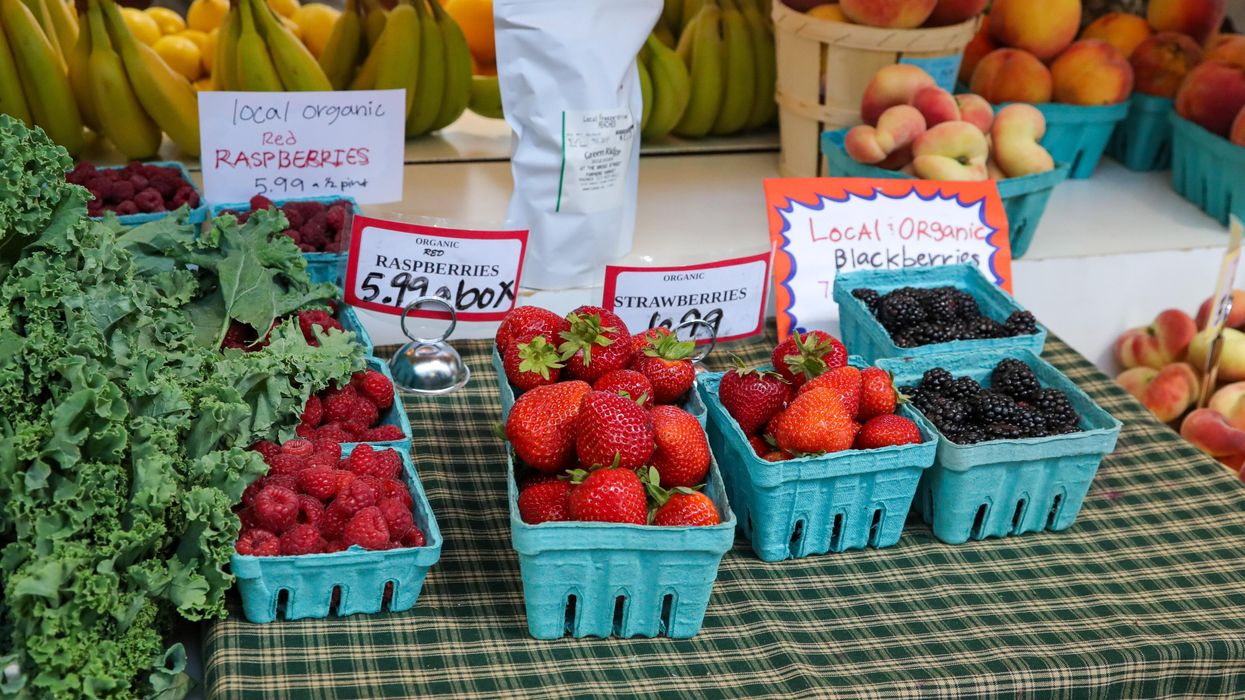Farmers Sue Trump USDA Over Deletion of 'Vital' Climate Information
"USDA should be working to protect our food system from droughts, wildfires, and extreme weather, not denying the public access to critical resources," argued one attorney.
Climate defenders and farmers sued the Trump administration in federal court on Monday over "the U.S. Department of Agriculture's unlawful purge of climate-related policies, guides, datasets, and resources from its websites."
The complaint was filed in the Southern District of New York by Earthjustice and the Knight First Amendment Institute at Columbia University on behalf of the Environmental Working Group (EWG), Natural Resources Defense Council (NRDC), and Northeast Organic Farming Association of New York (NOFA-NY).
The case focuses on just one part of Republican President Donald Trump's sweeping effort to purge the federal government and its resources of anyone or anything that doesn't align with his far-right agenda, including information about the fossil fuel-driven climate emergency.
"USDA's irrational climate change purge doesn't just hurt farmers, researchers, and advocates. It also violates federal law several times over," Earthjustice associate attorney Jeffrey Stein said in a statement. "USDA should be working to protect our food system from droughts, wildfires, and extreme weather, not denying the public access to critical resources."
"The Trump administration has deliberately stripped farmers and ranchers of the vital tools they need to confront the escalating extreme weather threats."
Specifically, the groups accused the department of violating the Administrative Procedure Act, Freedom of Information Act, and Paperwork Reduction Act. As the complaint details, on January 30, "USDA Director of Digital Communications Peter Rhee sent an email ordering USDA staff to 'identify and archive or unpublish any landing pages focused on climate change' by 'no later than close of business' on Friday, January 31."
"Within hours, and without any public notice or explanation, USDA purged its websites of vital resources about climate-smart agriculture, forest conservation, climate change adaptation, and investment in clean energy projects in rural America, among many other subjects," the document states. "In doing so, it disabled access to numerous datasets, interactive tools, and essential information about USDA programs and policies."
EWG Midwest director Anne Schechinger explained that "by wiping critical climate resources from the USDA's website, the Trump administration has deliberately stripped farmers and ranchers of the vital tools they need to confront the escalating extreme weather threats like droughts and floods."
NOFA-NY board president Wes Gillingham emphasized that "farmers are on the frontlines of climate impacts, we have been reacting to extreme weather and making choices to protect our businesses and our food system for years. Climate change is not a hoax. Farmers, fishermen, and foresters know from experience, that we need every piece of science and intergenerational knowledge to adjust to this new reality."
Rebecca Riley, NRDC's managing director of food and agriculture, pointed out that "by removing climate information from the USDA's website, the Trump administration is not just making farming harder—it is undermining our ability to adapt and respond to the very challenges climate change presents."
The coalition asked the court to declare the purge unlawful and order the USDA to restore the webpages, to refrain from further implementing Rhee's directive, and to comply with its legal obligations regarding public notices.
“USDA's policies influence everything from the shape of our economy to the food we eat," said Stephanie Krent, a staff attorney at the Knight First Amendment Institute. "USDA's sudden elimination of webpages that used to provide this information hurts all of us. Members of the public have a right to know how the department is implementing its priorities and administering its programs."
The New York Timesreported Monday that "the Agriculture Department referred questions about the lawsuit to the Justice Department, which did not immediately respond to a request for comment." The suit is just one of dozens filed against the Trump administration since the inauguration last month.
Schechinger stressed that "this lawsuit isn't just about transparency—it's about holding those in power accountable for undermining the very information that helps protect the livelihoods of food producers, the food system, and our future."


